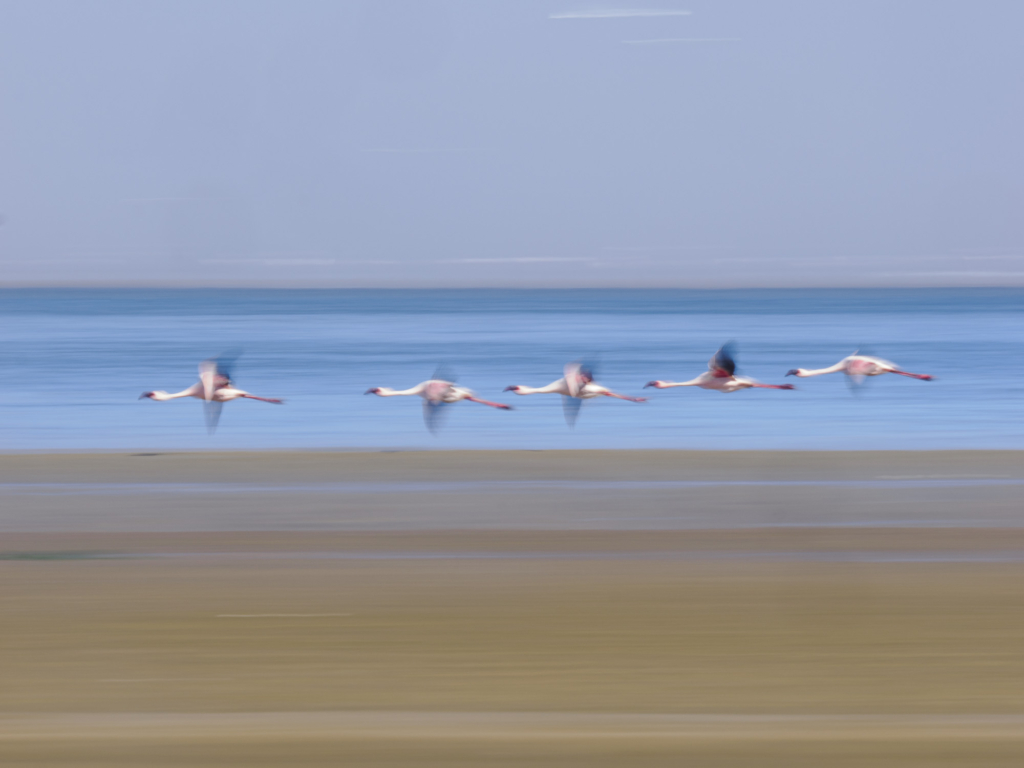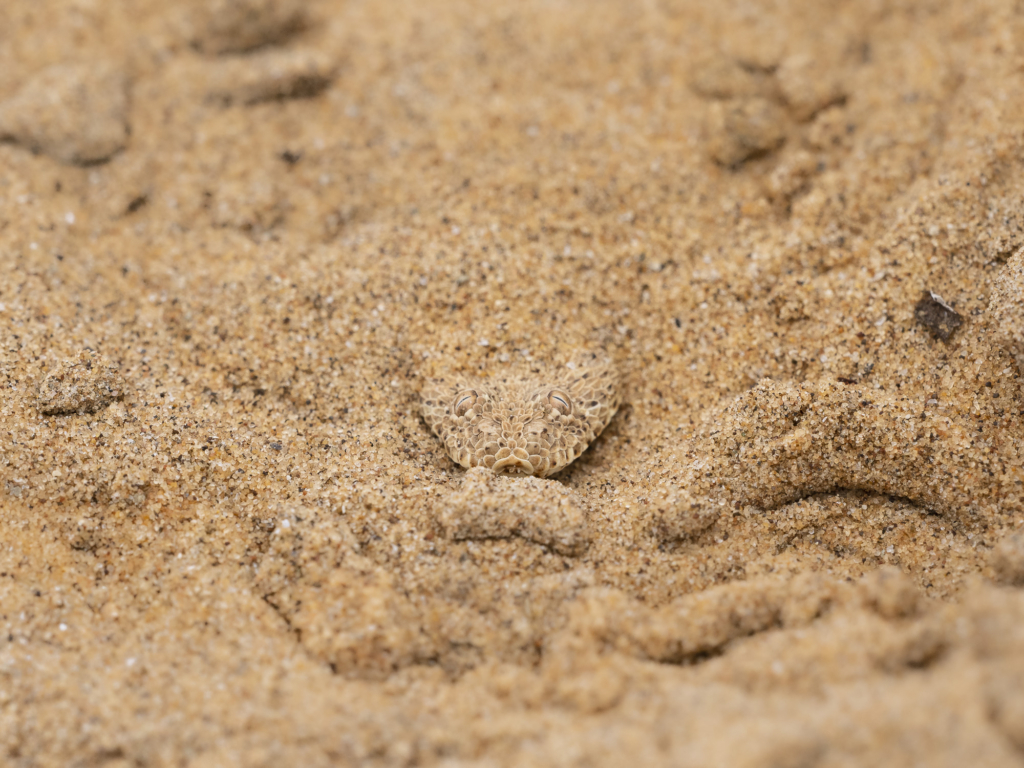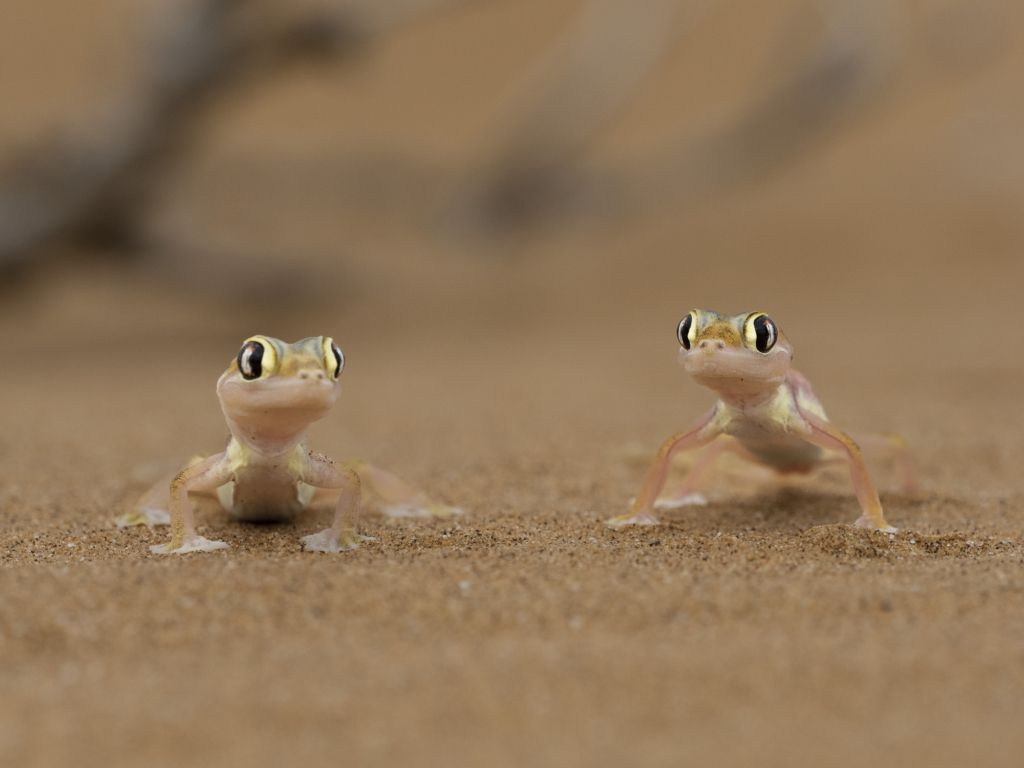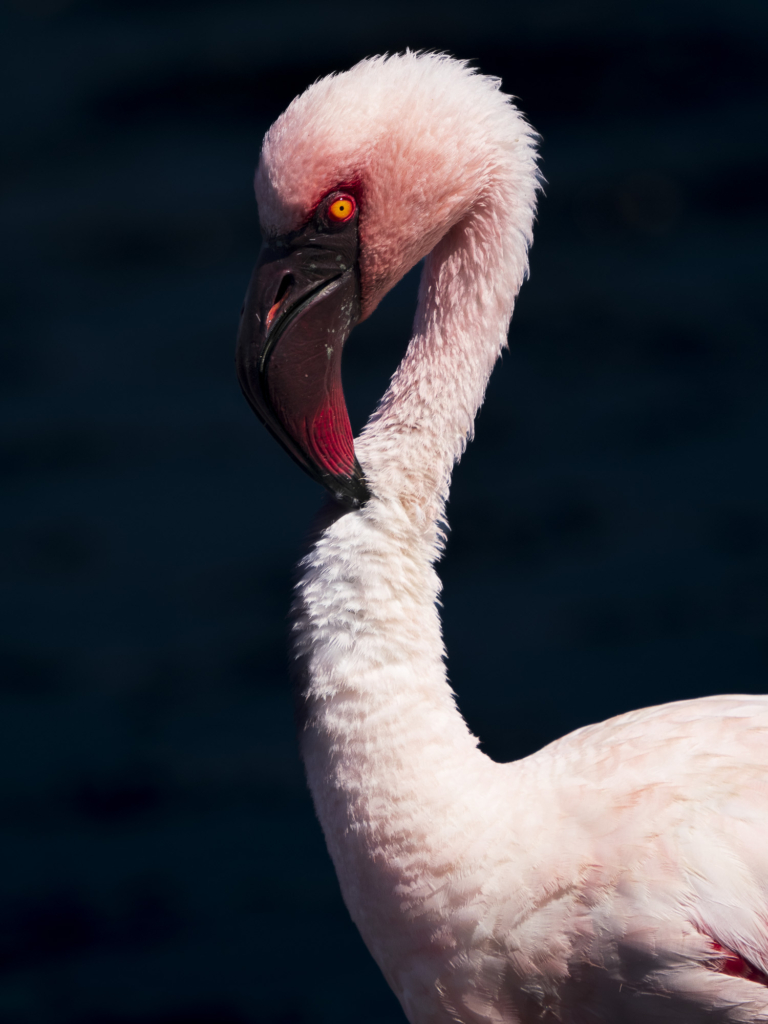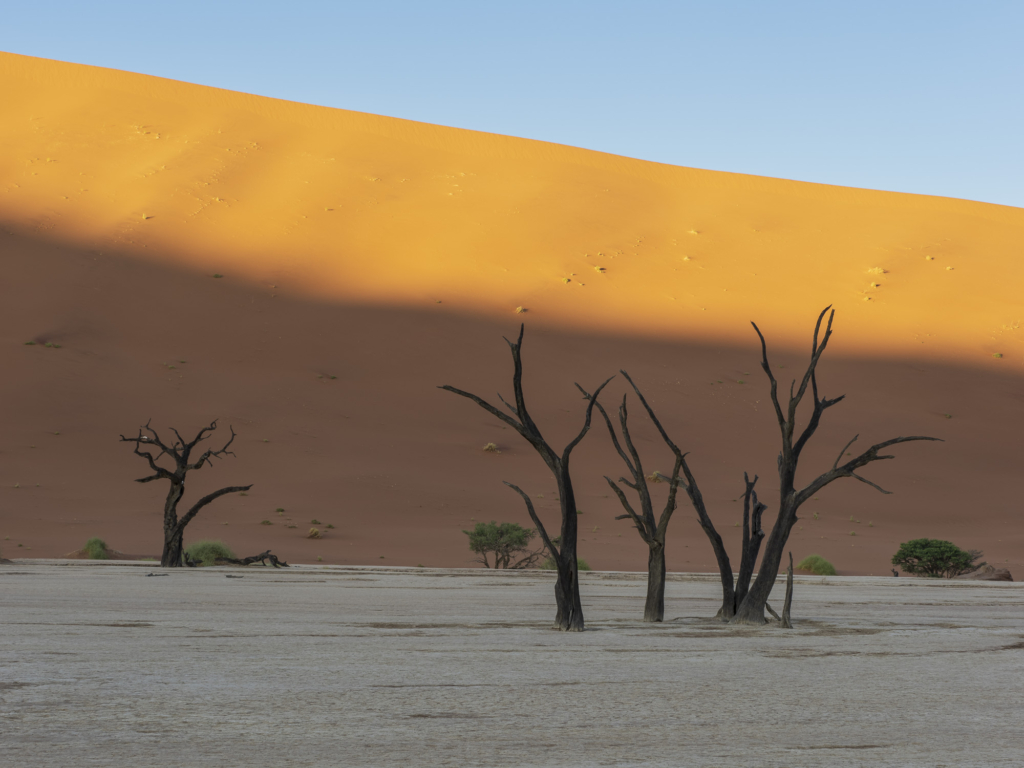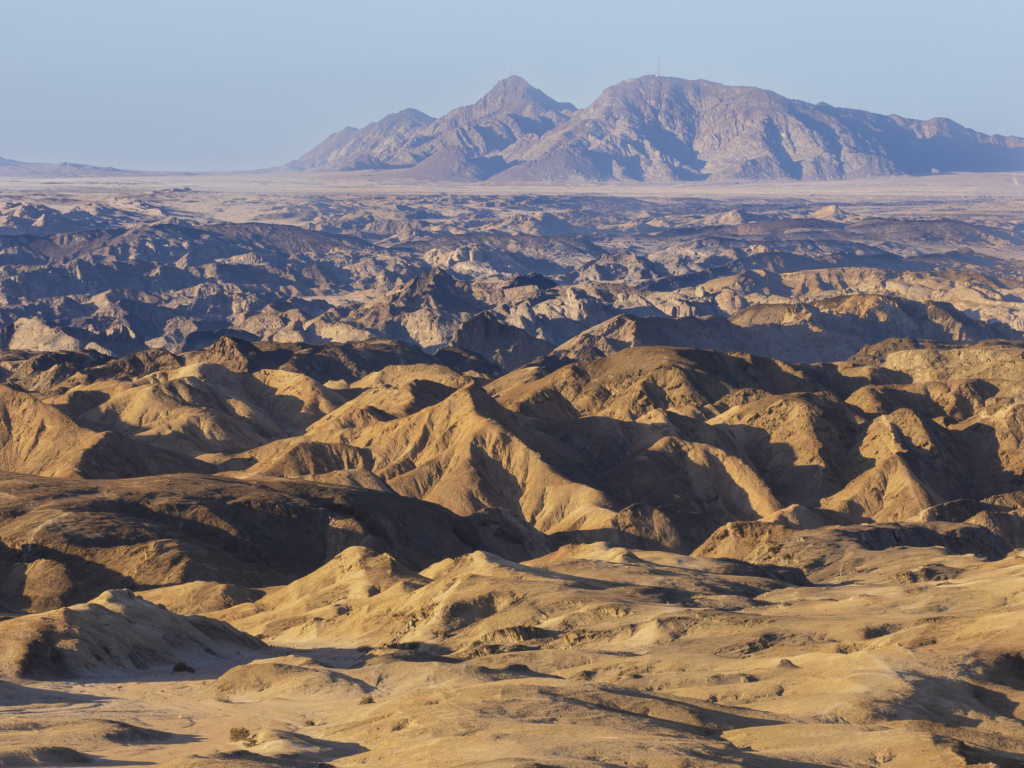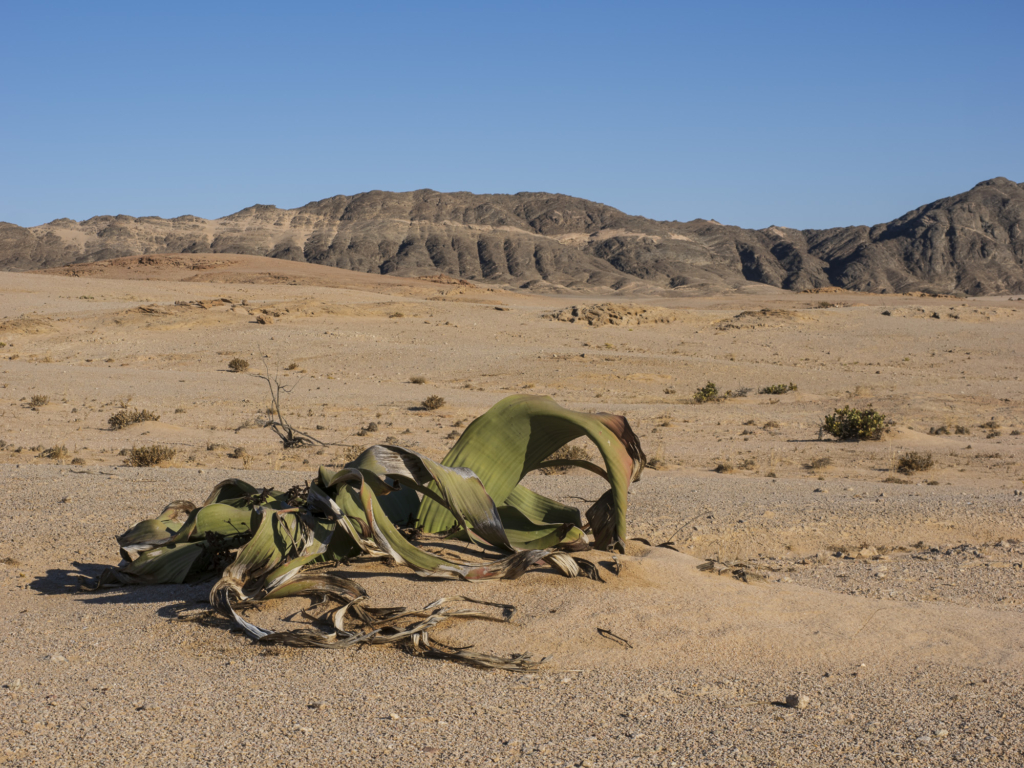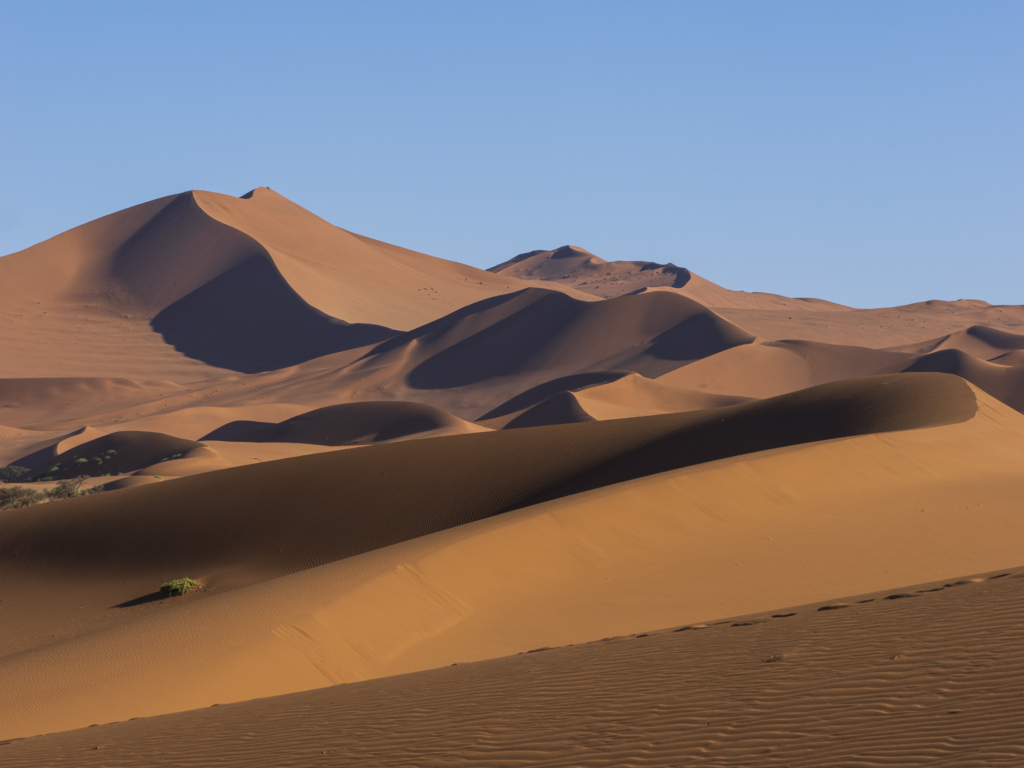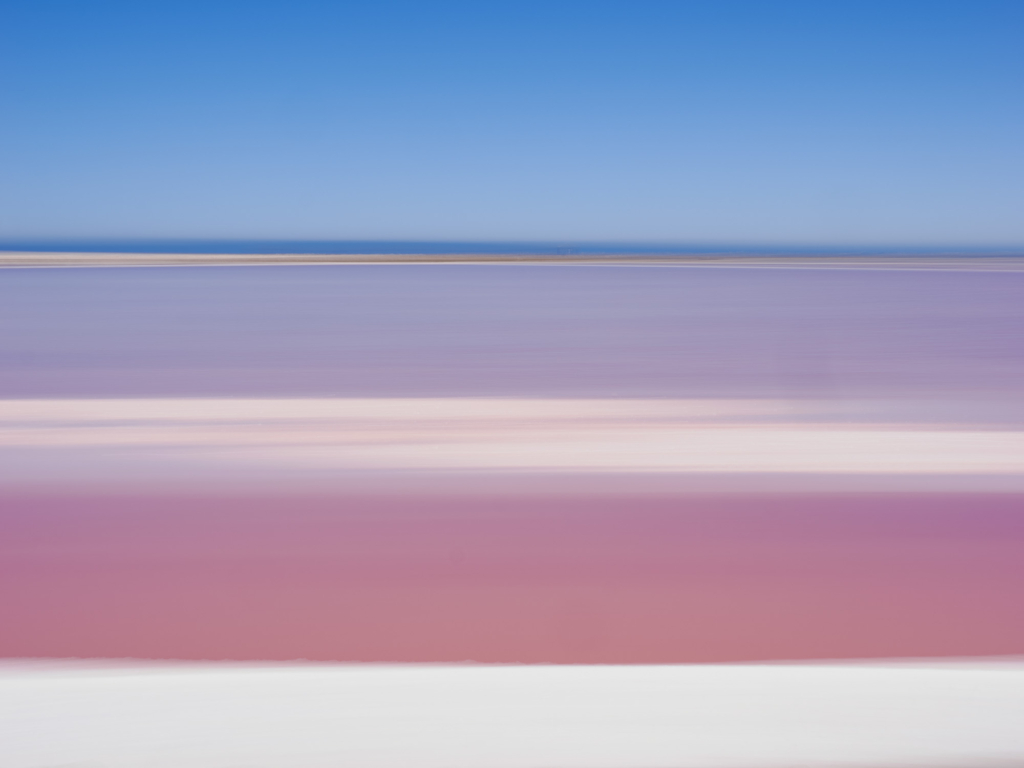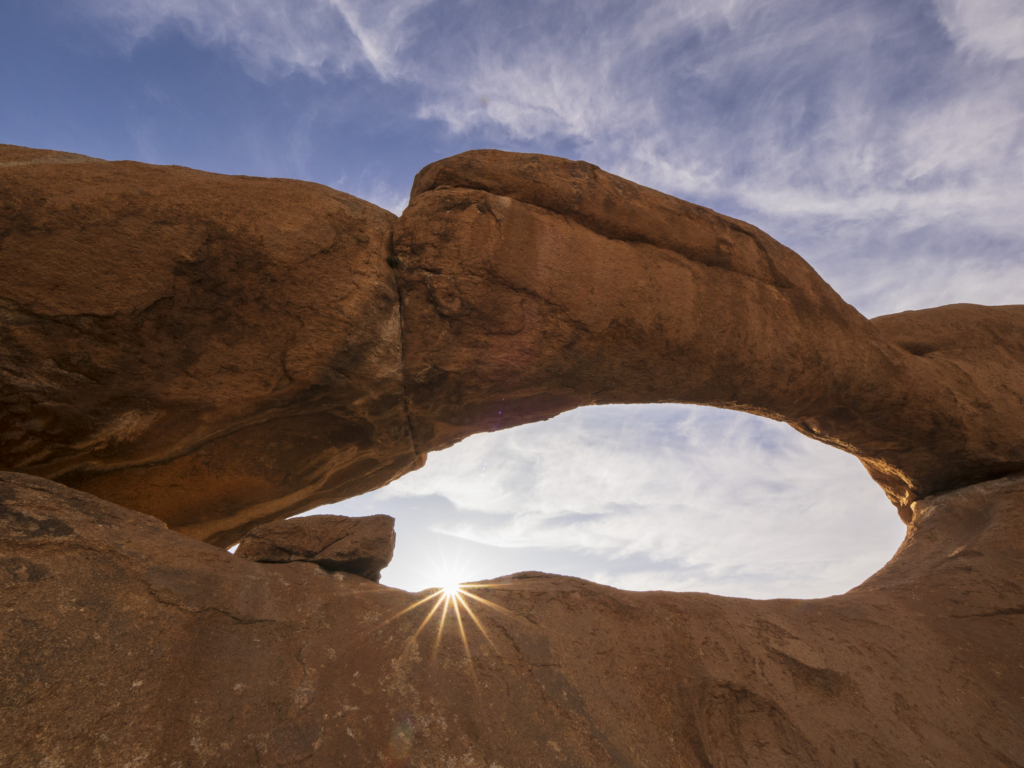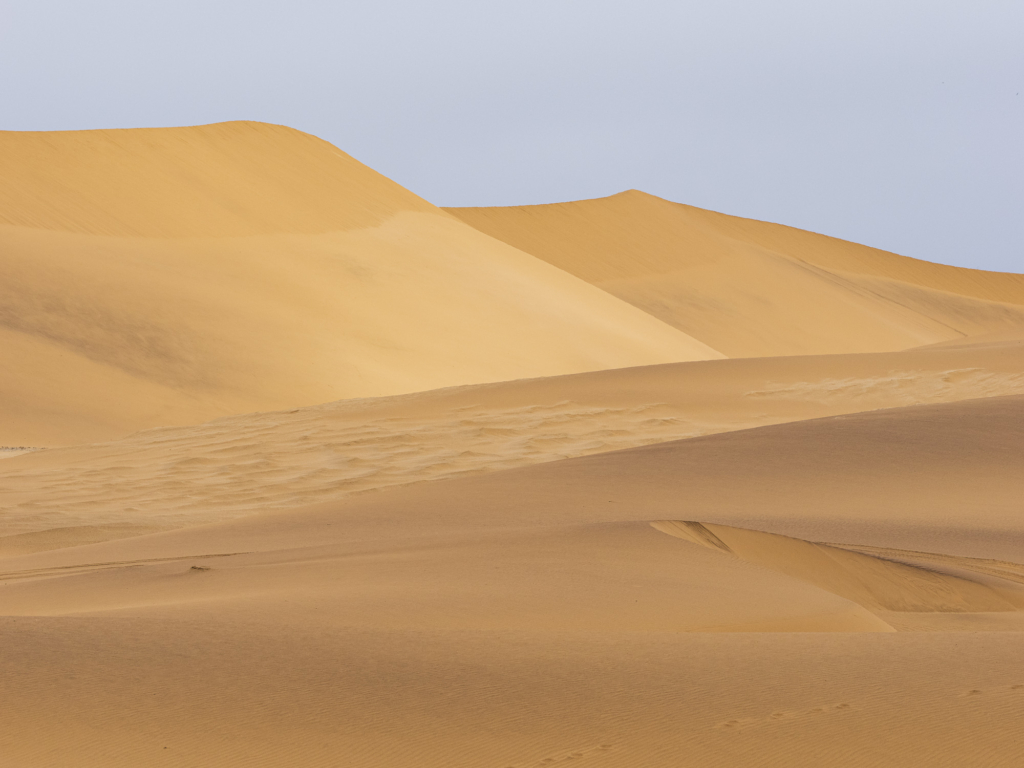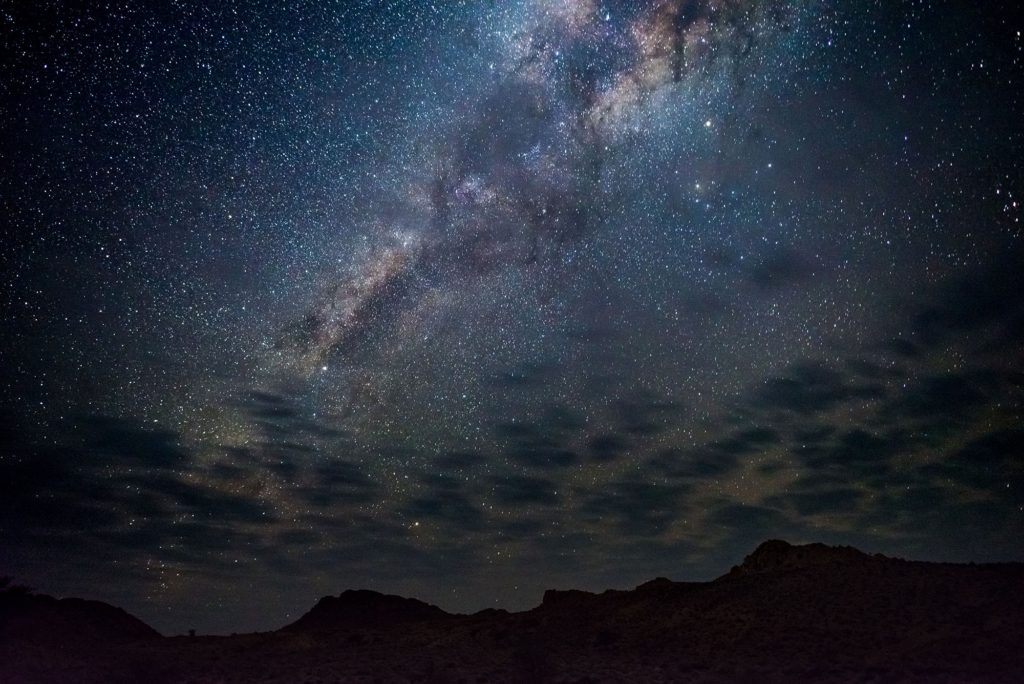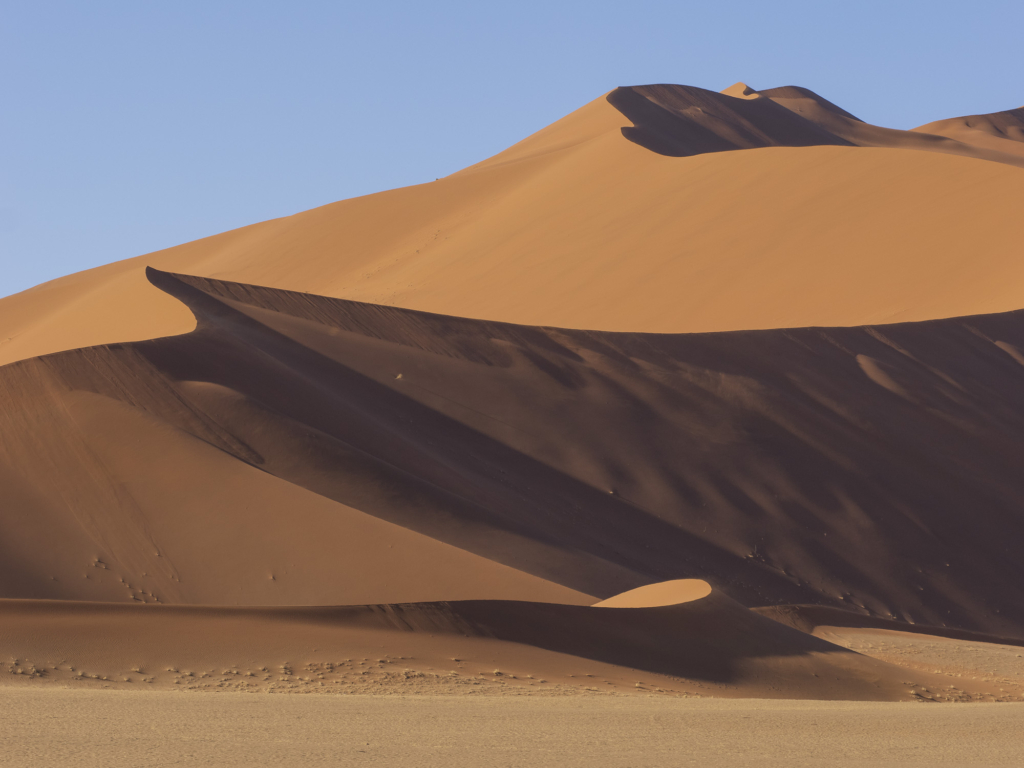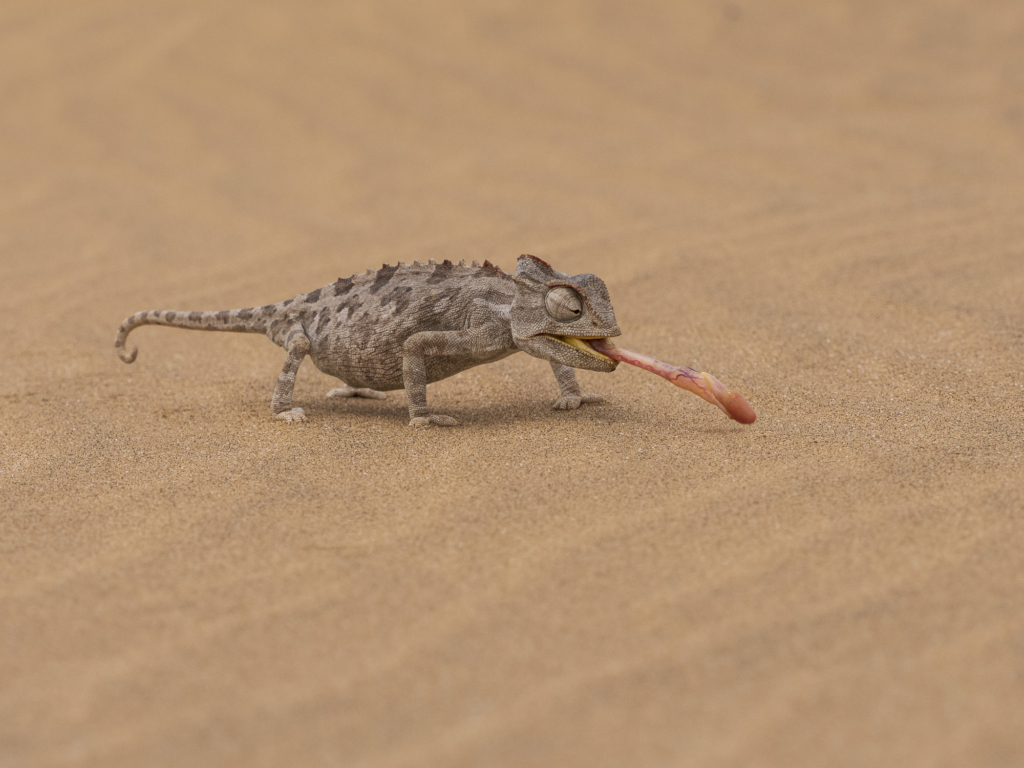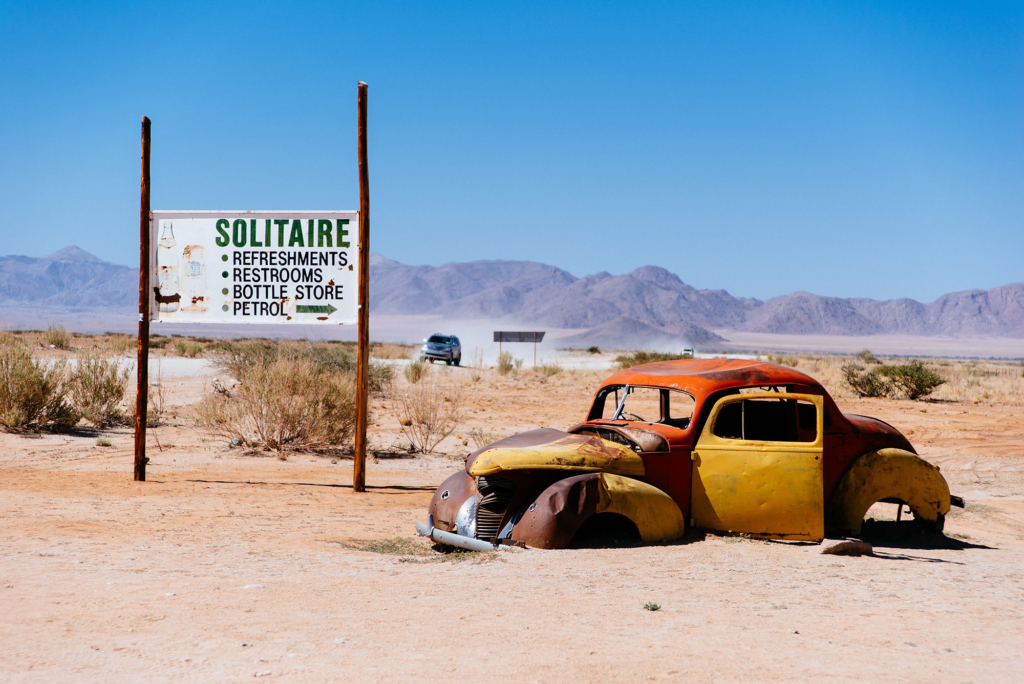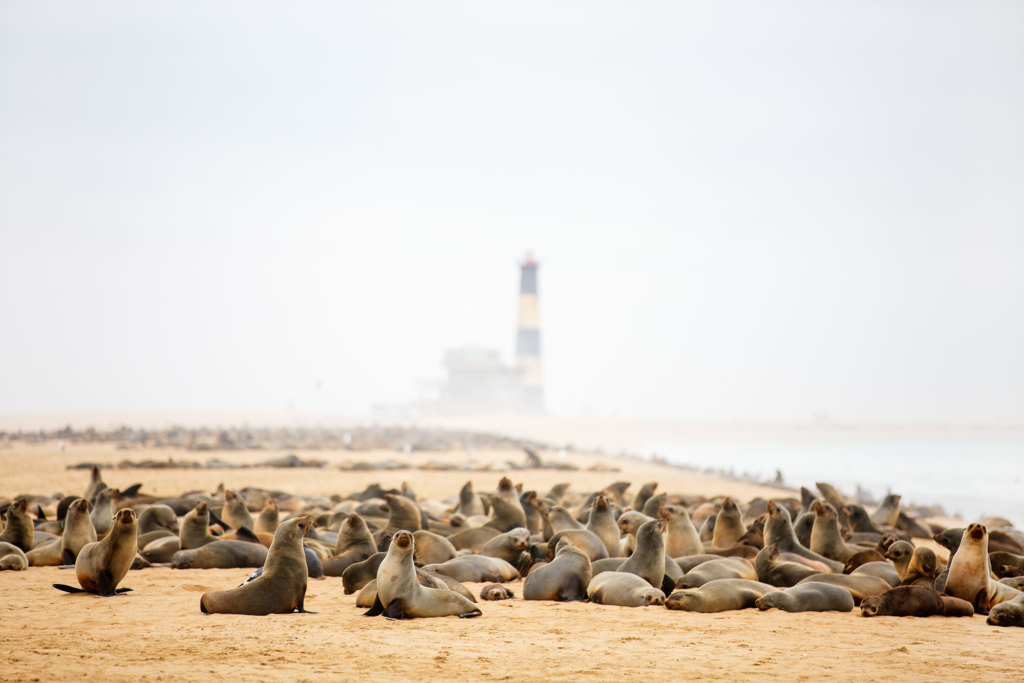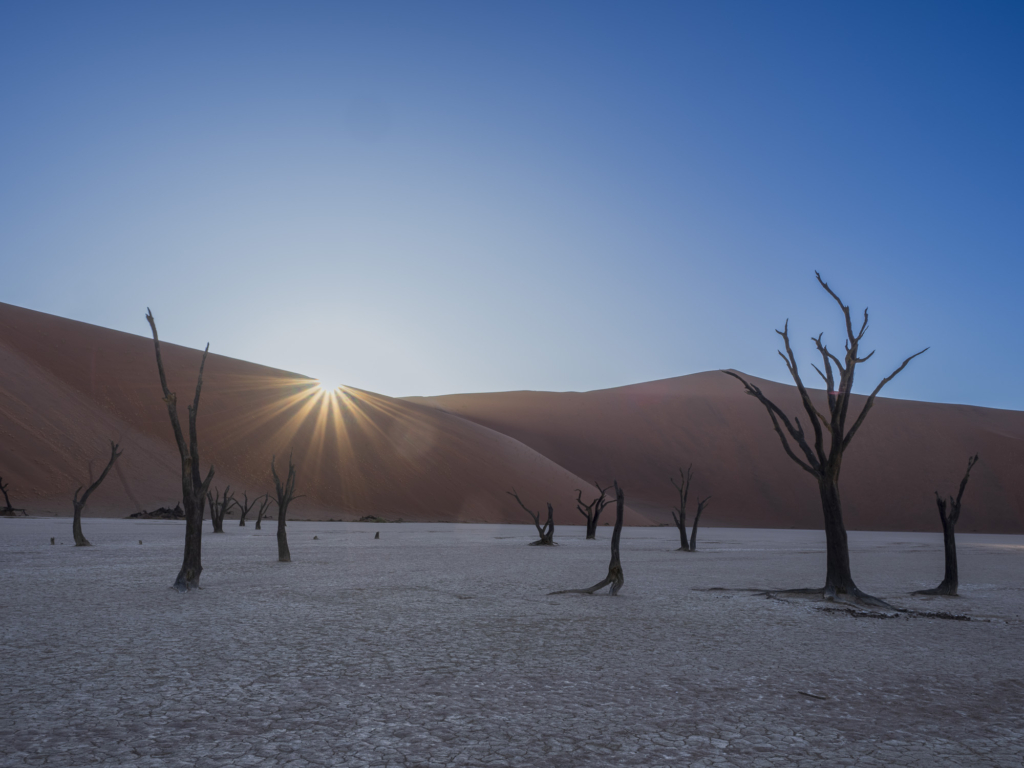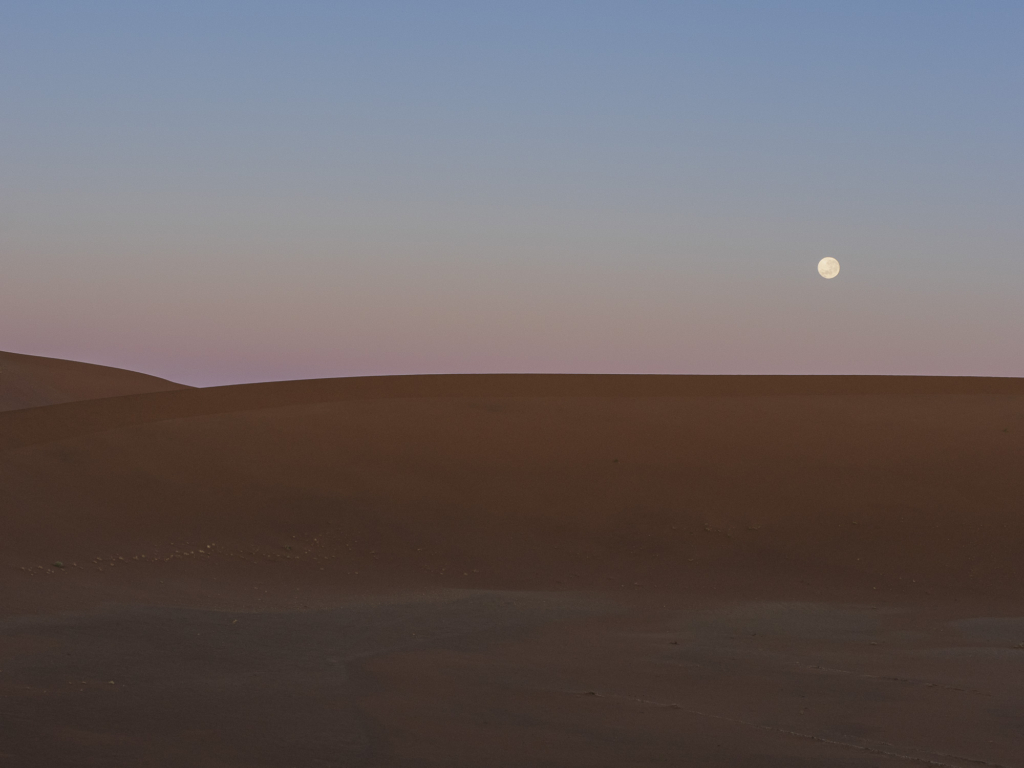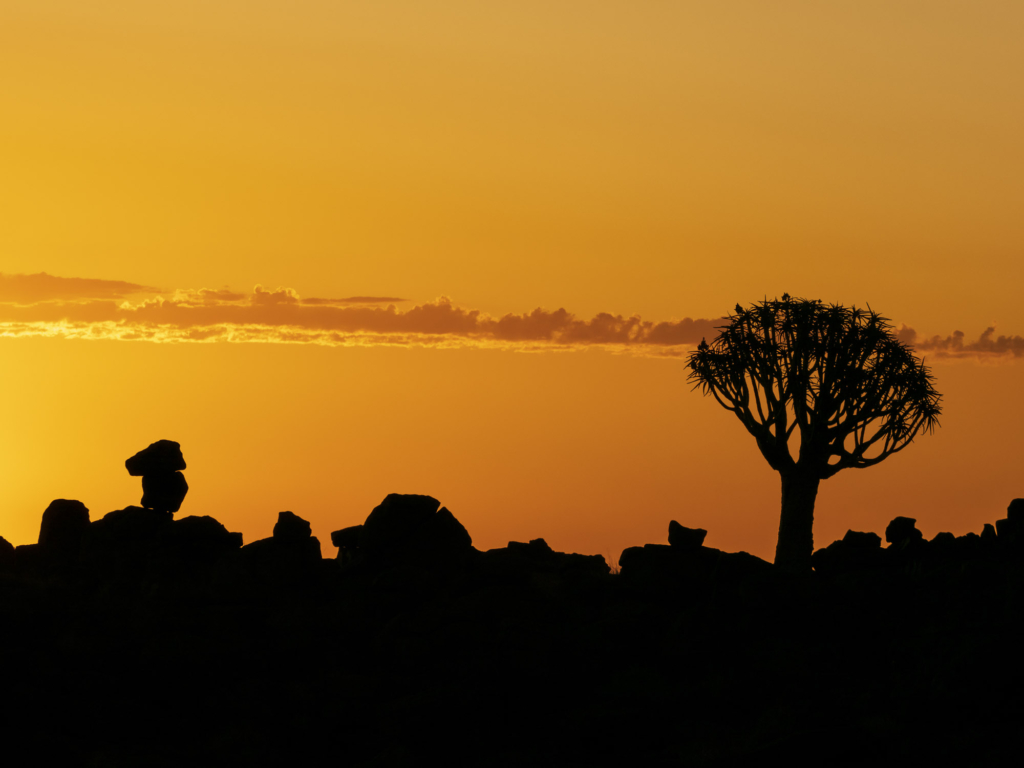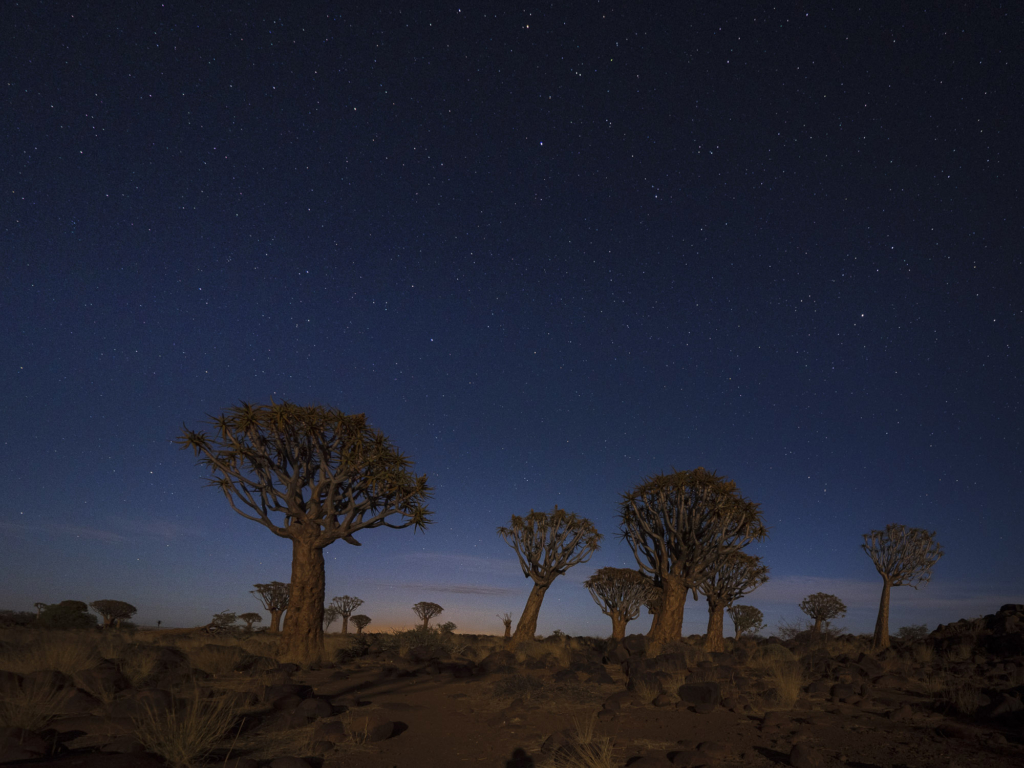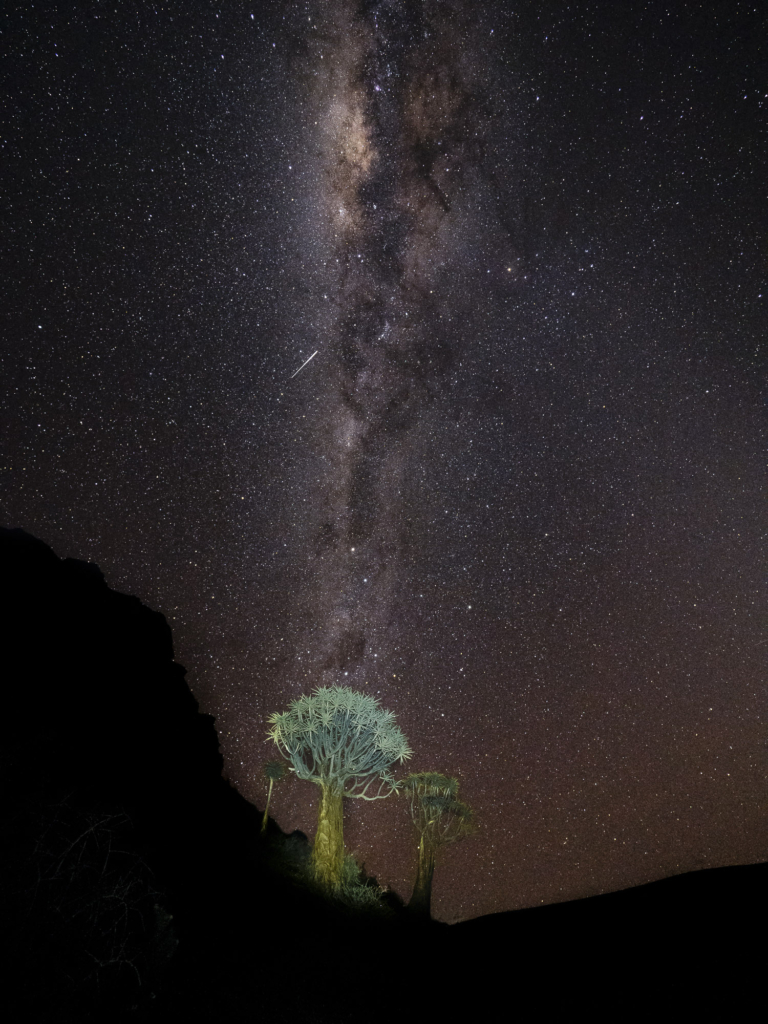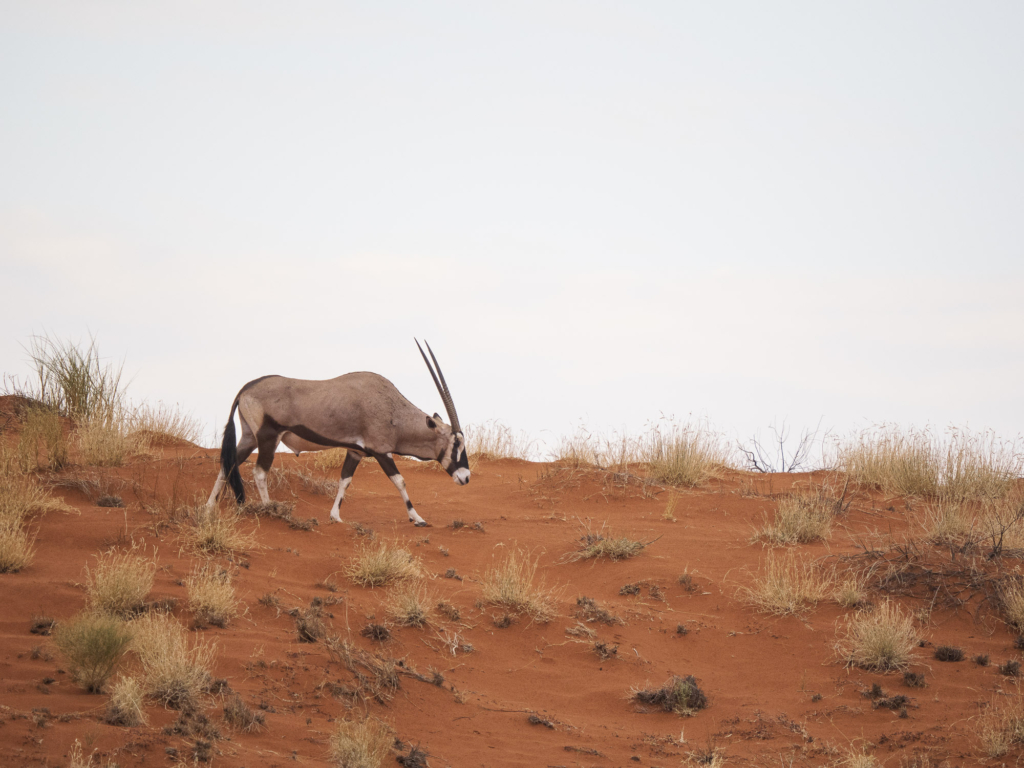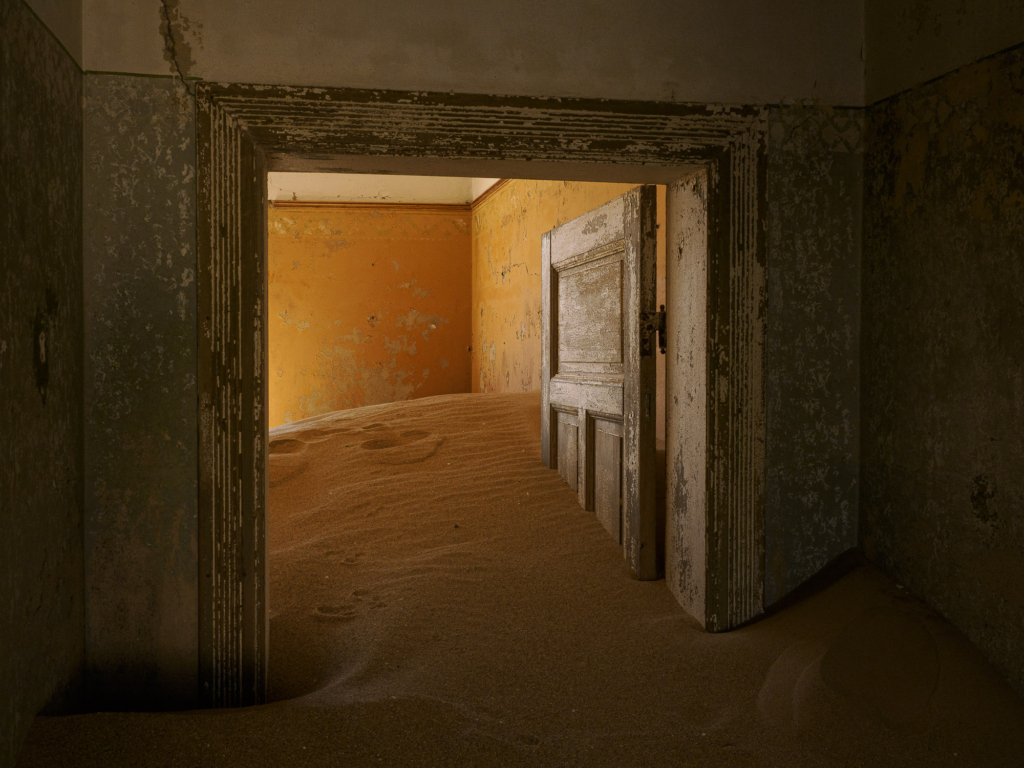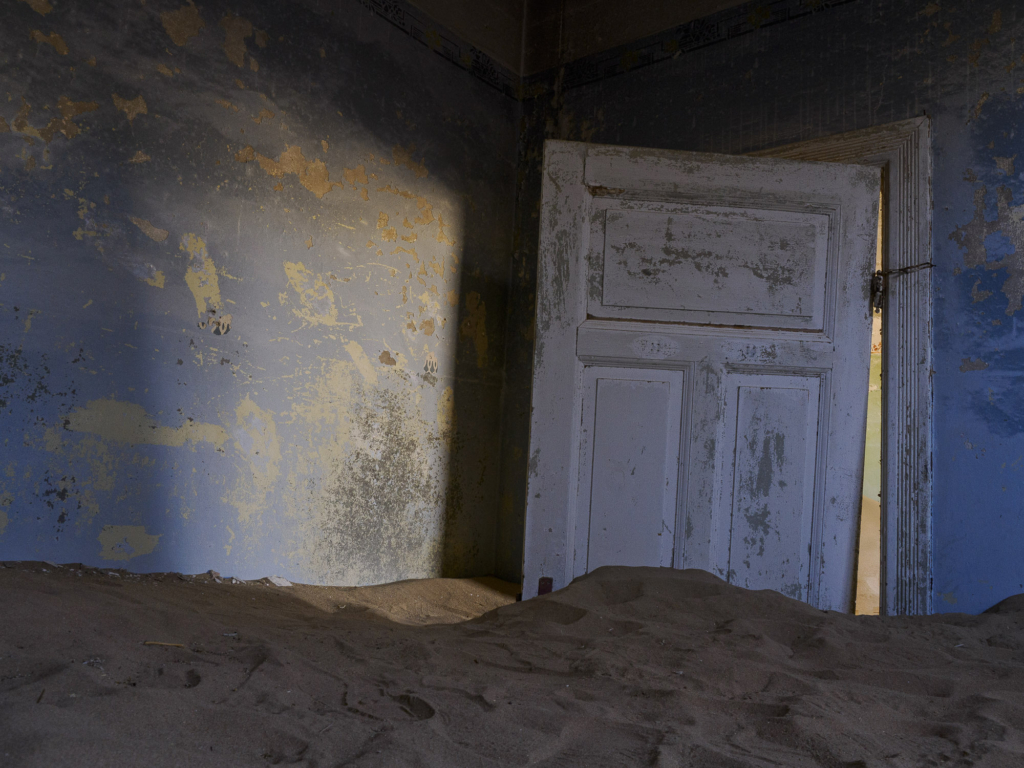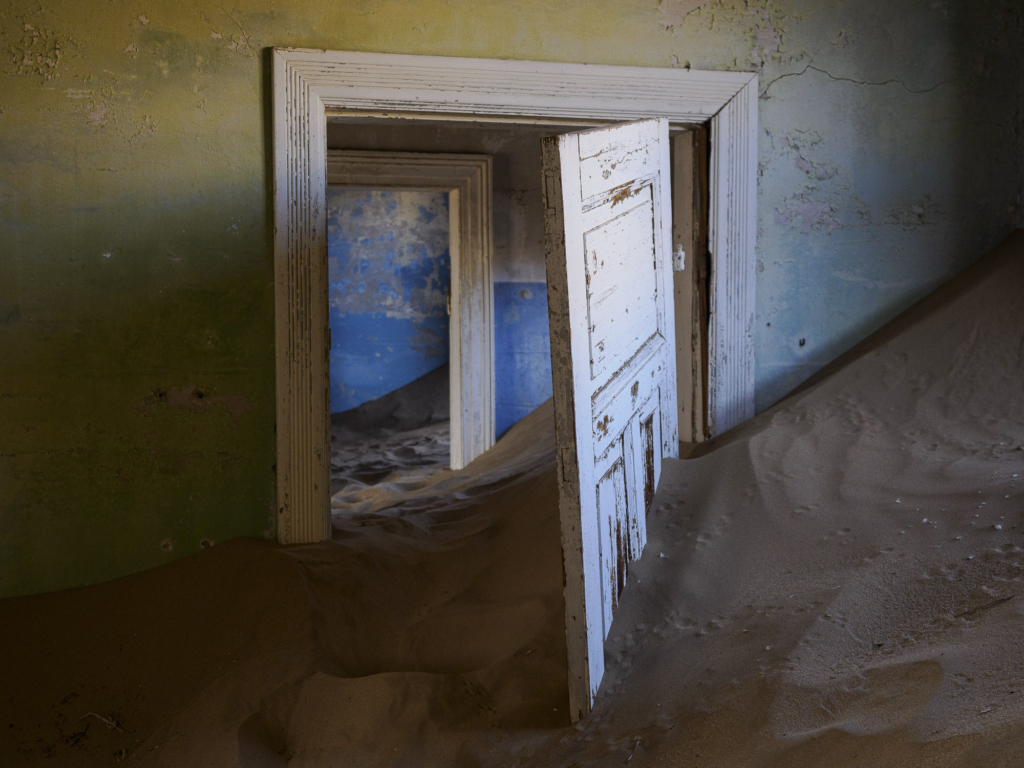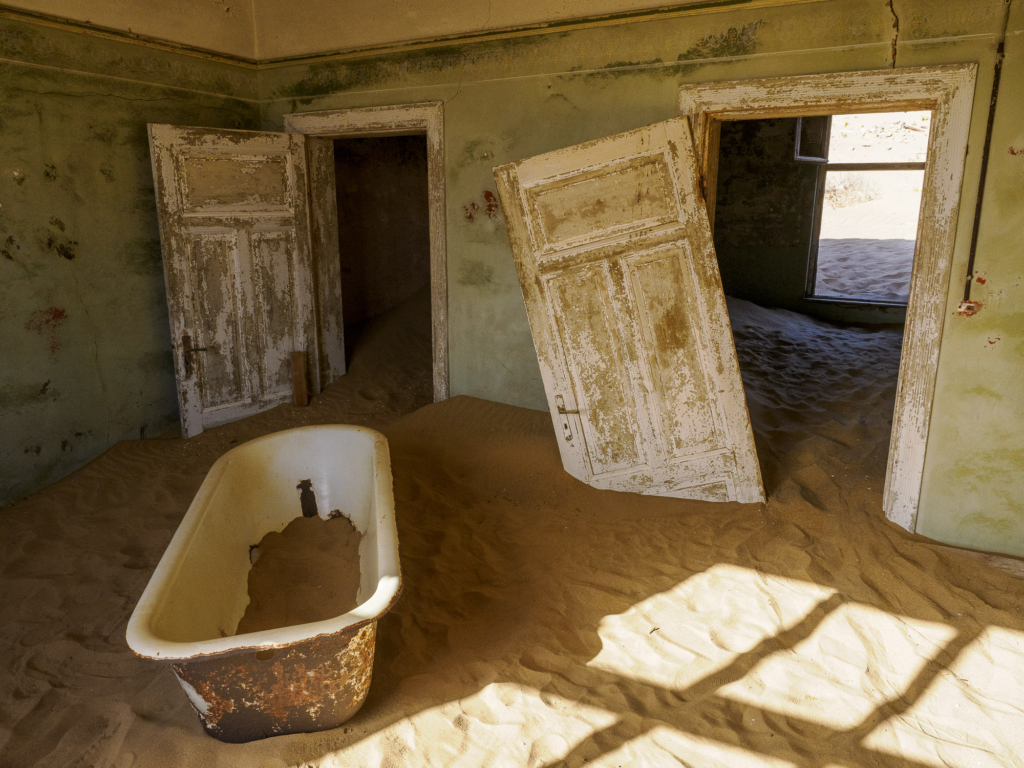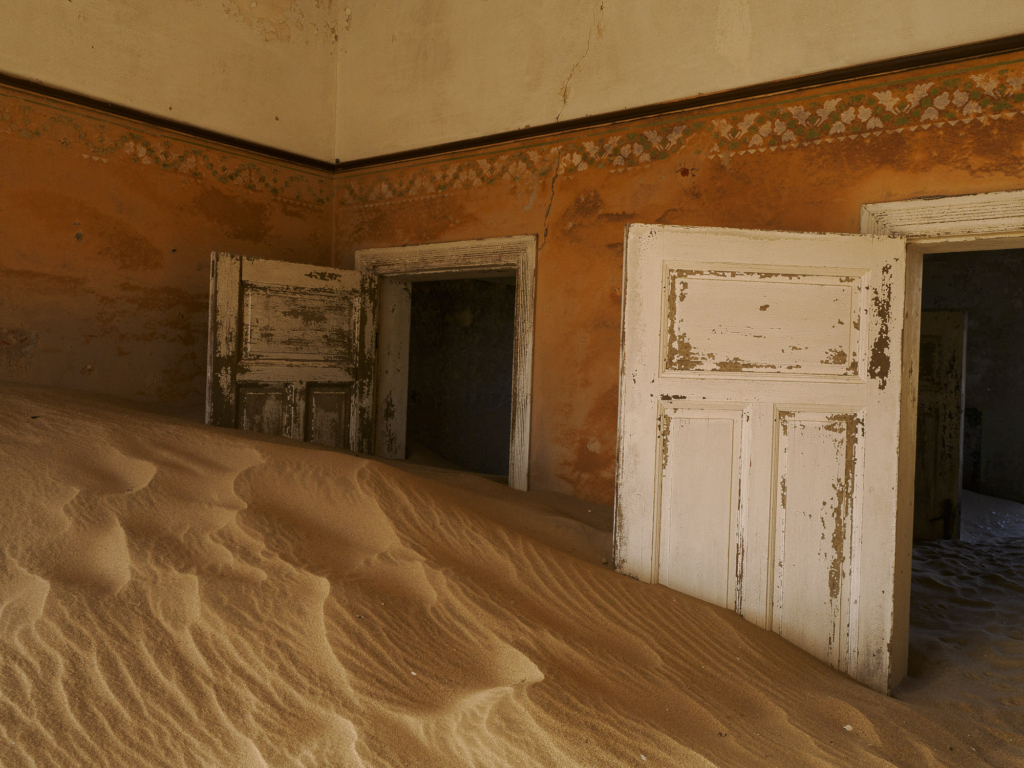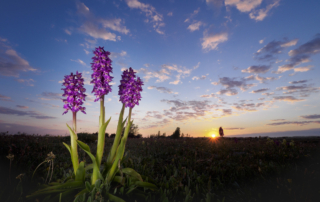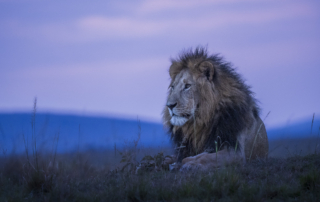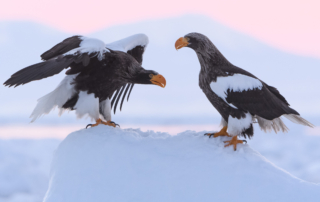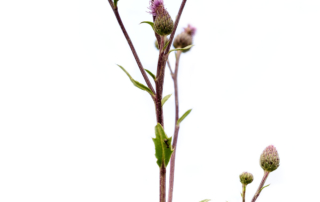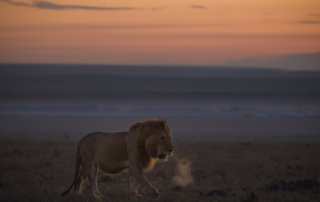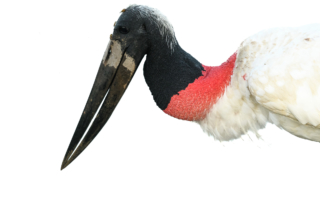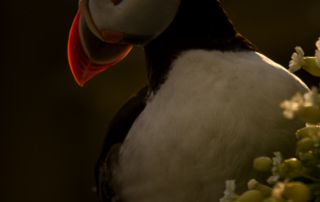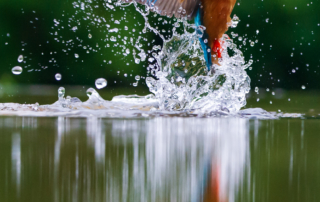Some highlights
- Sossusvlei’s big red dunes
- Dead vleis dead trees
- Photo safari in Dorob National Park where we look for the small animals of the desert such as the Namib Dune Gecko, Shovel-Snouted Lizard, sidewinder and Namaqua chameleon
- 4WD safari across the desert sand dunes to Sandwich Harbour. During this afternoon and evening, will we have nice landscape photo opportunities both on the dunes, “from above” and when the sea meets the desert
- Flamingos, pelicans and other birds in Walvis bay
- Amazing starry skies
- Cape Cross – fur seal colony
- Welwitschia Mirabilis – one of the world’s oldest plant species
- We are looking for desert elephants
- Fantastic rock paintings
- Spitzkoppe – Africas Matterhorn. High mountain peak and dramatic rock formations
- ONLY 6 participants on the trip but two photographic guides
- We are only 3 participants in each car. We travel in spacious four-wheel drive Toyota Hiace “Bakkies”
NAMIBIA…
…a place you thought couldn’t exist. Namibia, like no other, combines the spectacular with the endless and surreal. Vast, ancient and extremely sparsely populated, but here there is an incredible variety and combination of different environments and landscapes. Join us on a photographic adventure to this exciting country. Our trip will offer a wide range of spectacular photo opportunities, from landscape photography to animal photography (both large and small). The cities in Namibia are still characterized by German architecture and you can find wonderfully good apfel strudel in the city’s cafes.
Sossusvlei in the Namib-Naukluft National Park is our first stop on the trip. Some of the world’s highest sand dunes await us here. Beautifully ochre-coloured, they are wonderful subjects to photograph in the morning and evening light. The most famous dunes are Big Daddy, Big Mama and Dune 45. In Sossulvlei we also find Dead Vlei, the area was once an oasis with acacia trees but then the river changed its direction and the area dried out and the trees died. Today the trees stand as black relics. Sossusvlei offers fantastic landscape photography and in addition to the famous motifs, we will take you to lesser known places. To be able to be out and photograph in the early morning light and late evening light, we stay at one of the two lodges located inside the park. Hopefully the nights will also give us great opportunities for star photography.
From Sossusvlei we make our way through the Namib Desert west towards the coast, more precisely to Swakopmund. With the city as a starting point, we will explore both the surrounding desert but also the coast. We will go out into the Dorob National Park and look for the small animals of the desert. With a little luck, we will have the opportunity to photograph both small geckos, chameleons, snakes and some of the other exciting animals that live in the desert. The sand in Dorob differs in color from the one we experienced in Sossusvlei, here the desert is yellow. During our days here, we will have the opportunity to photograph both sand dunes and other exciting desert environments, e.g. we do an afternoon/evening “excursion” to Sandwich Harbour. We take a four-wheel drive vehicle over the desert sand dunes and there will be many photo opportunities both on the desert from “above” when we cross the dunes but also where the sea meets the desert. In Sandwich Harbor there is also a bird-rich wetland. We will also see one of the world’s oldest plant species, Welwitschia Mirabilis, some of the plants here are estimated to be more than 1500 years old. The coast south of Swakopmund is a fine birding area. We will make our way to Walvis Bay and spend time with flamingos and loads of other birds. Our days here will also give us opportunities to photograph some coastal and beach scenery.
We leave Swakopmund and head further north towards Cape Cross and the large fur seal colony found there. Here we are also invited to many meetings with birds. From Cape Cross we make our way into Damaraland and to Brandberg. Here the desert landscape changes to more mountainous and rocky, the landscape is dramatic. Here we hope that we have luck on our side, partly because the nights are clear so we can enjoy and photograph the fantastic starry sky seen here, partly because this is where we have the chance to see the desert-dwelling elephants. The desert elephants are not a separate species, but over the centuries they have adapted their way of life to the desert and the scarce resources found here. The elephants migrate from area to area depending on the season and rain. Here are also some of Namibia’s absolutely finest rock paintings, which we should of course see.
Our final destination on the trip is Spitzkoppe and the dramatic mountain scenery there. Here, wind and water have shaped fantastic formations in the mountains. Perhaps the most famous is the large stone arch, Spitzkoppe arch, which rises magnificently in the landscape. Here, with a special permit, we will also be allowed to enter the park earlier than the reserve’s normal opening hours to be able to photograph the sunrise.
Namibia is a large country, and sometimes there are long distances between the places we want to photograph, we travel in four-wheel drive Toyota cars with substantial cargo spaces.
During the trip, we will have different photographic workshops where we will, among other things, go through different techniques to prepare for different types of photography that will come during the trip. We also look at image composition and each other’s images, all to develop your particular photography.
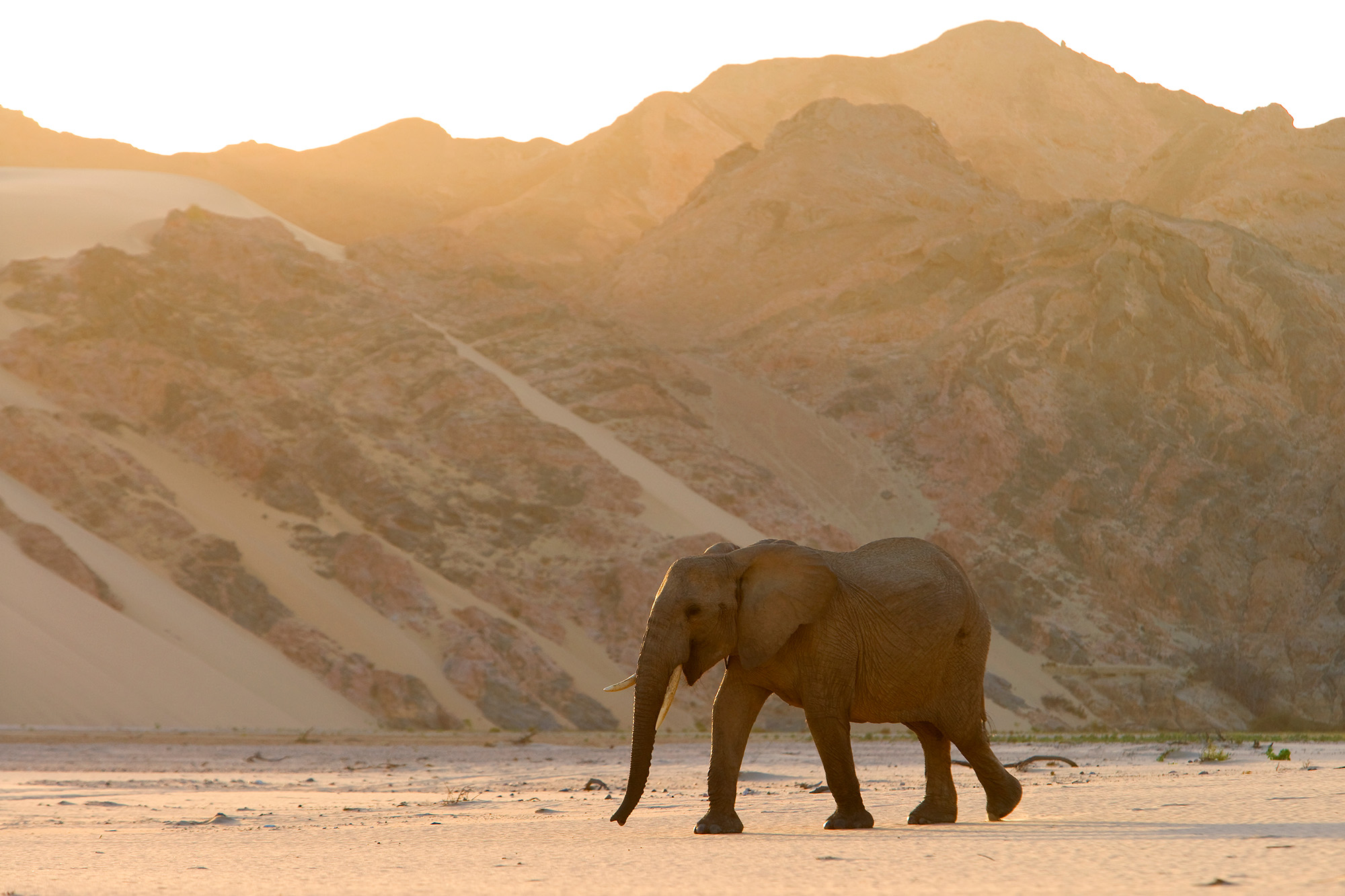
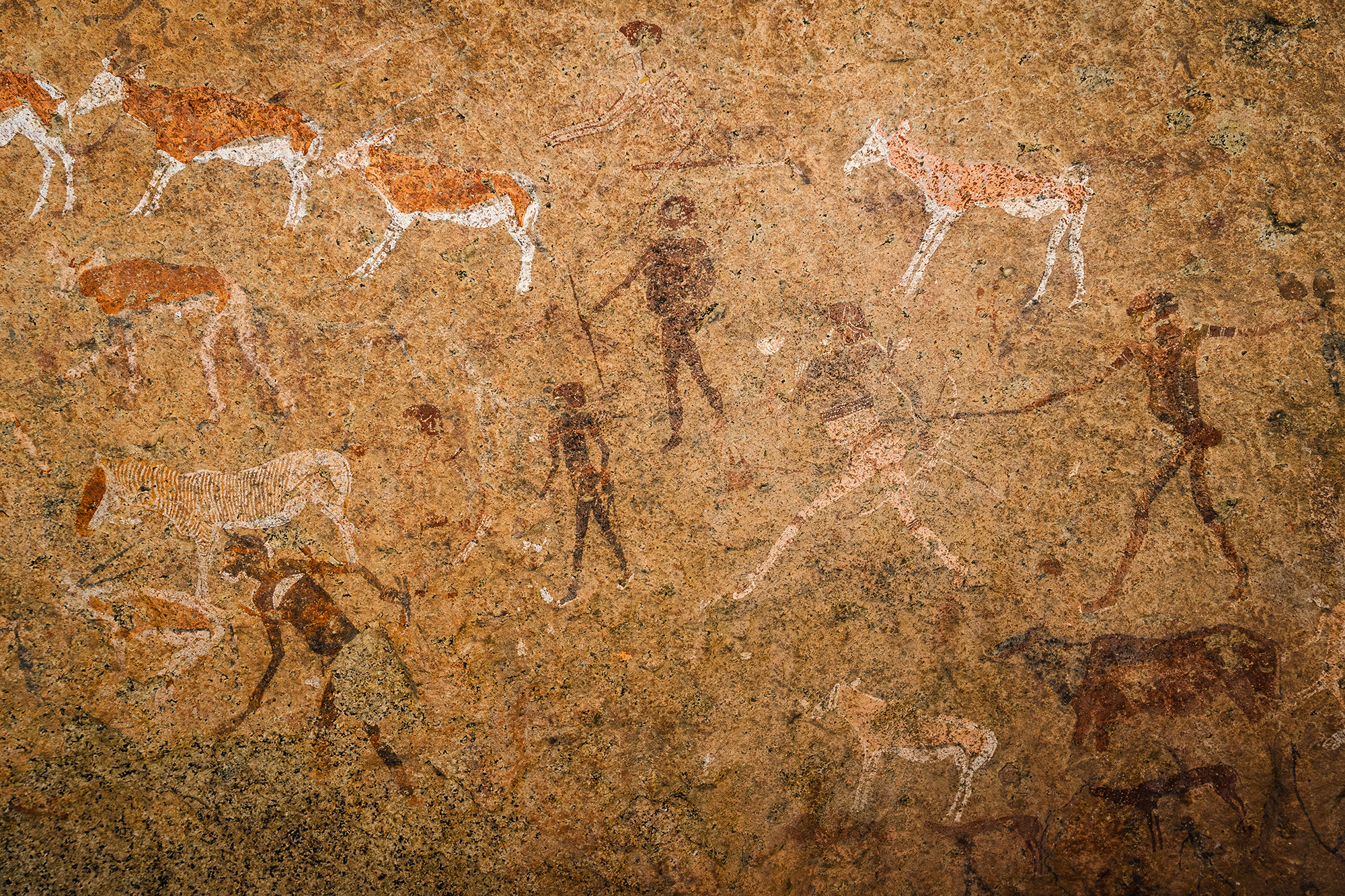
Itinerary
Day 1 (6/10) (Lunch – Dinner)
Arrival in Windhoek in the morning. We travel towards Sossusvlei and our lodge. Lunch on the way. After we’ve checked in and rested for a little while, we head out to photograph. We spend the afternoon and evening among the sand dunes of Sossusvlei.
Day 2 (7/10) (Breakfast – Lunch – Dinner)
We start the day early and we get to Dead Vlei in time to be able to photograph the area in the nice morning light. We have breakfast packs with us so we can focus on the photography. In the late morning/early morning we make our way back to our lodge and rest a bit. During the afternoon we head out again to experience Sossusvlei. Where we go depends a little on the weather.
Day 3 (8/10) (Breakfast – Lunch – Dinner)
Even today, we start the day before sunrise. We head towards the area with the large sand dunes, but where we choose to focus our photography depends a little on our result from yesterday and weather conditions. In the morning we begin our journey towards Swakopmund. We travel through a barren desert landscape with few communities along the way. The afternoon and evening photography activities depend on when we arrive in Swakopmund, there are some interesting things along the way.
Day 4 (9/10) (Breakfast – Lunch – Dinner)
We start the day at a slightly more “normal” time today. We eat breakfast at our accommodation before being picked up around 7.30 by our guide who will take us out into the desert. All morning we are in the Dorob desert looking for the small animals of the desert. We hope to find many of the desert’s animals, our tour also provides opportunities for landscape photography in the dune landscape. During the afternoon and evening we go out into the desert to photograph Welwitchia and an area known as the lunar landscape. There is also an oasis here that we will visit.
Day 5 (10/10) (Breakfast – Lunch – Dinner)
Today we go a little south of Swakopmund, to Walvis Bay to explore the bird grounds that are here. Along the coast and in floodplains we find thousands of smaller flamingos and other funny birds. We will also go to what is called Pink lake. During the afternoon and evening we head out into the desert. Over sand dunes we make our way to Sandwich Harbour.
Day 6 (11/10) (Breakfast – Lunch – Dinner)
We go to Cape cross in the morning. The afternoon is spent at the large fur seal colony.
Day 7 (12/10) (Breakfast – Lunch – Dinner)
We spend the morning at the fur seal colony and the beach. During the morning we go towards Damaraland and Brandberg. We check in at our lodge and in the afternoon we go on a safari to try to find the desert elephants. NOTE: The execution of these safaris depends entirely on whether the elephants are in the area or not, we will be informed of that upon our arrival. If the conditions are right, we try to photograph the starry sky when it is dark.
Day 8 (13/10) (Breakfast – Lunch – Dinner)
If the desert elephants are in the area, we go on another safari to try to photograph them. We will also spend time on landscape photography and looking at the rock paintings that exist. Even tonight we will photograph the starry sky if the conditions are right.
Day 9 (14/10) (Breakfast – Lunch – Dinner)
We leave this morning’s program a bit open. We will travel to Spitzkoppe in the morning, where we will then spend the afternoon and evening photographing the exciting landscape.
Day 10 (15/10) (Breakfast – Lunch)
We start the day early in order to be in place inside the reserve before sunrise. After an intensive morning photography session, we return to our lodge and pack for departure to Windhoek airport or to Etosha National Park if you have chosen to join us on our extension trip there.
Photographic leader
Henrik Karlsson, born in 1968, is a photographer, writer and conservation biologist.
Henrik is a trained biologist and used to work with water and conservation issues.
He is an ambassador for OM SYSTEM and has been appointed as a National Geographic Explorer and is a member of the Swedish Nature Photographers Association (Naturfotograferna/N) as well as PhotoNatura. In 2003 he was awarded Naturfotografernas/N and Kodak’s scholarship. Henrik has also won awards in several European photo competitions.
Henrik has a wide selection when it comes to subjects to take images of and tell stories about. He will be more than happy to photograph everything from insects to the orchids in the forest or the great wild animals around the world. He has the whole world as his photographic field but is more and more drawn to Africas beauty and wildness.
Previously, Henrik worked as a guide in several Swedish Nature Reserves and National Parks. He is a frequent lecturer and an appreciated guide on photo courses and workshops. He also leads photo tours all over the world.
In 2011 Henrik self-published the book ”Mångfaldens ö – bilder och tankar från Ölands natur”, and the book ”Vilda Norden” was published in 2017. 2020 he published the book Ölands orkidéer and in 2021 Orkidéer på Gotland.
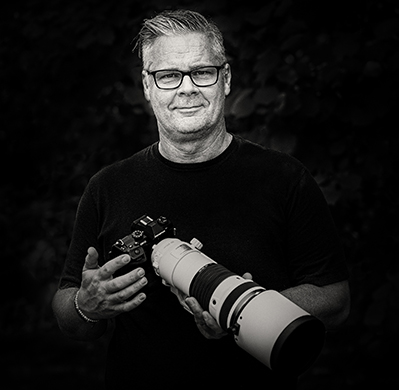
Error: Contact form not found.



